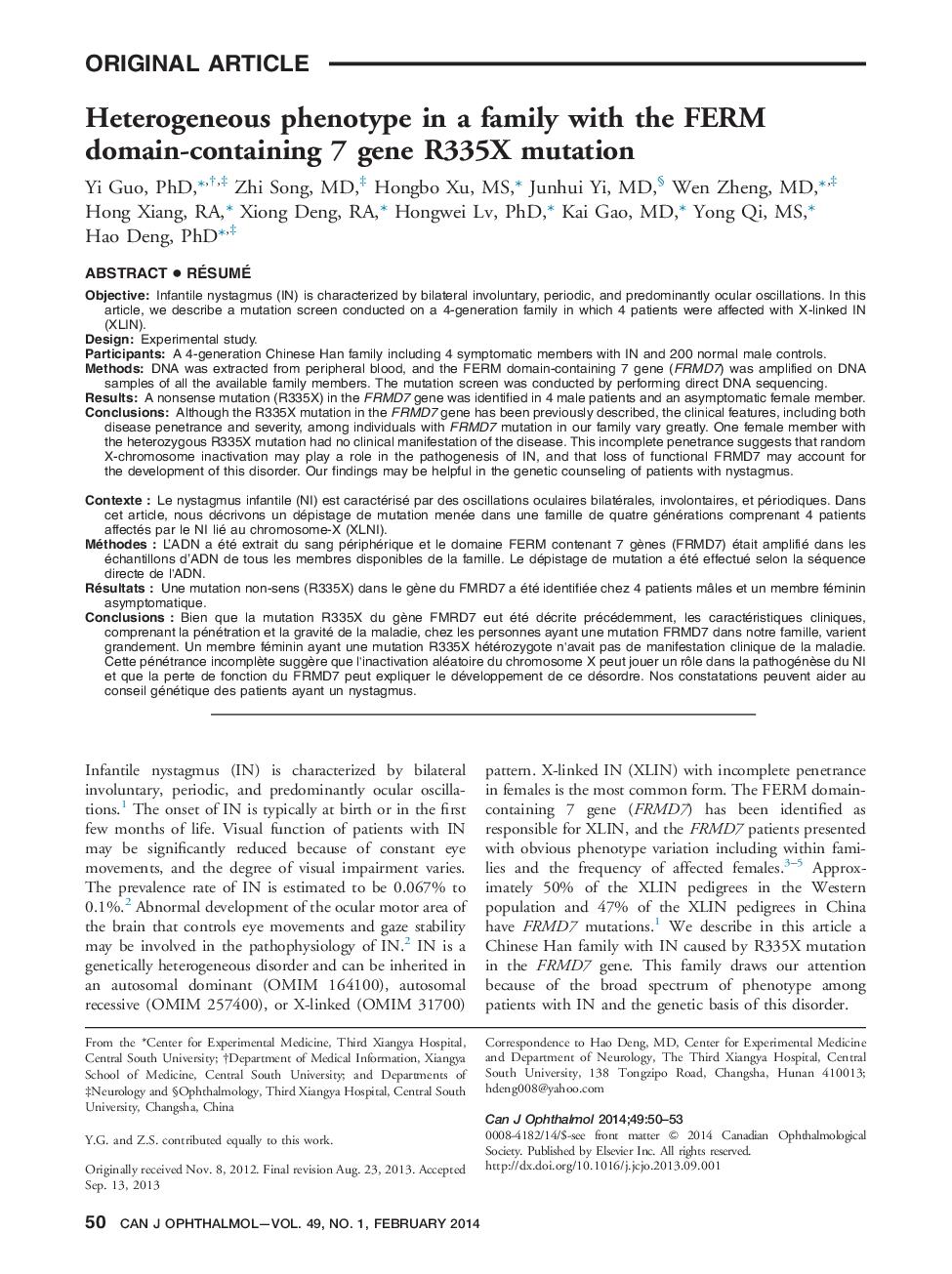| Article ID | Journal | Published Year | Pages | File Type |
|---|---|---|---|---|
| 4009147 | Canadian Journal of Ophthalmology / Journal Canadien d'Ophtalmologie | 2014 | 4 Pages |
ObjectiveInfantile nystagmus (IN) is characterized by bilateral involuntary, periodic, and predominantly ocular oscillations. In this article, we describe a mutation screen conducted on a 4-generation family in which 4 patients were affected with X-linked IN (XLIN).DesignExperimental study.ParticipantsA 4-generation Chinese Han family including 4 symptomatic members with IN and 200 normal male controls.MethodsDNA was extracted from peripheral blood, and the FERM domain-containing 7 gene (FRMD7) was amplified on DNA samples of all the available family members. The mutation screen was conducted by performing direct DNA sequencing.ResultsA nonsense mutation (R335X) in the FRMD7 gene was identified in 4 male patients and an asymptomatic female member.ConclusionsAlthough the R335X mutation in the FRMD7 gene has been previously described, the clinical features, including both disease penetrance and severity, among individuals with FRMD7 mutation in our family vary greatly. One female member with the heterozygous R335X mutation had no clinical manifestation of the disease. This incomplete penetrance suggests that random X-chromosome inactivation may play a role in the pathogenesis of IN, and that loss of functional FRMD7 may account for the development of this disorder. Our findings may be helpful in the genetic counseling of patients with nystagmus.
RésuméContexteLe nystagmus infantile (NI) est caractérisé par des oscillations oculaires bilatérales, involontaires, et périodiques. Dans cet article, nous décrivons un dépistage de mutation menée dans une famille de quatre générations comprenant 4 patients affectés par le NI lié au chromosome-X (XLNI).MéthodesL’ADN a été extrait du sang périphérique et le domaine FERM contenant 7 gènes (FRMD7) était amplifié dans les échantillons d’ADN de tous les membres disponibles de la famille. Le dépistage de mutation a été effectué selon la séquence directe de l'ADN.RésultatsUne mutation non-sens (R335X) dans le gène du FMRD7 a été identifiée chez 4 patients mâles et un membre féminin asymptomatique.ConclusionsBien que la mutation R335X du gène FMRD7 eut été décrite précédemment, les caractéristiques cliniques, comprenant la pénétration et la gravité de la maladie, chez les personnes ayant une mutation FRMD7 dans notre famille, varient grandement. Un membre féminin ayant une mutation R335X hétérozygote n'avait pas de manifestation clinique de la maladie. Cette pénétrance incomplète suggère que l'inactivation aléatoire du chromosome X peut jouer un rôle dans la pathogénèse du NI et que la perte de fonction du FRMD7 peut expliquer le développement de ce désordre. Nos constatations peuvent aider au conseil génétique des patients ayant un nystagmus.
